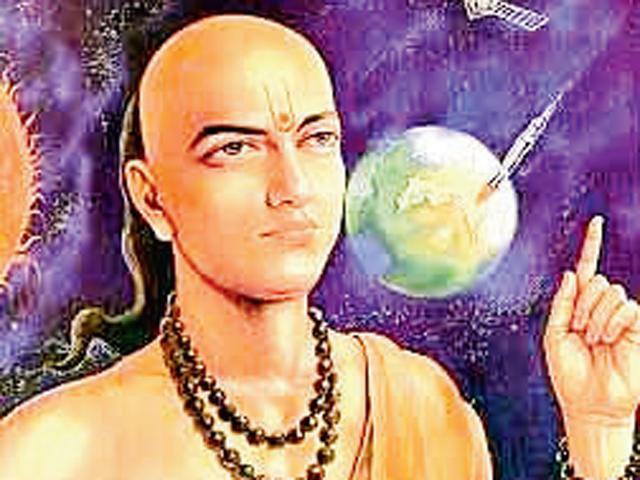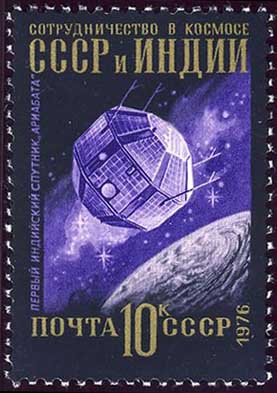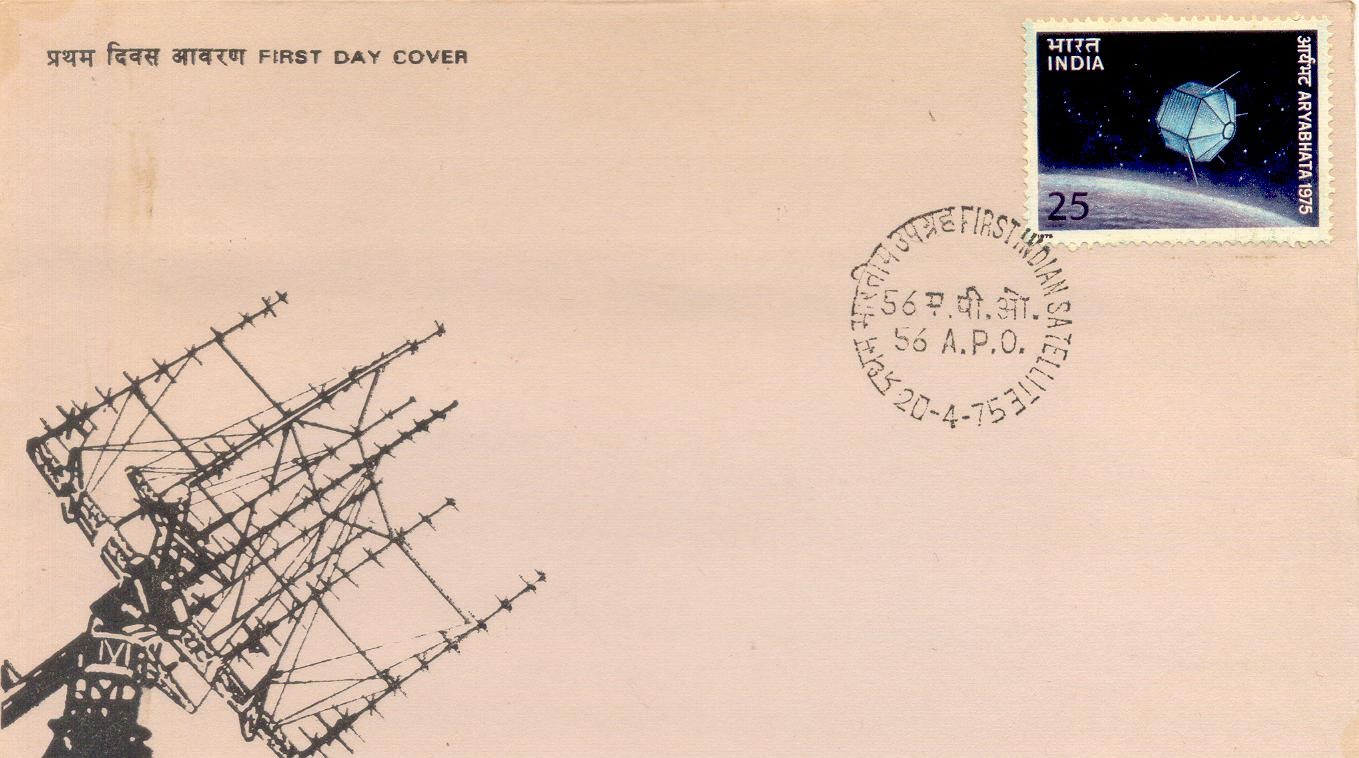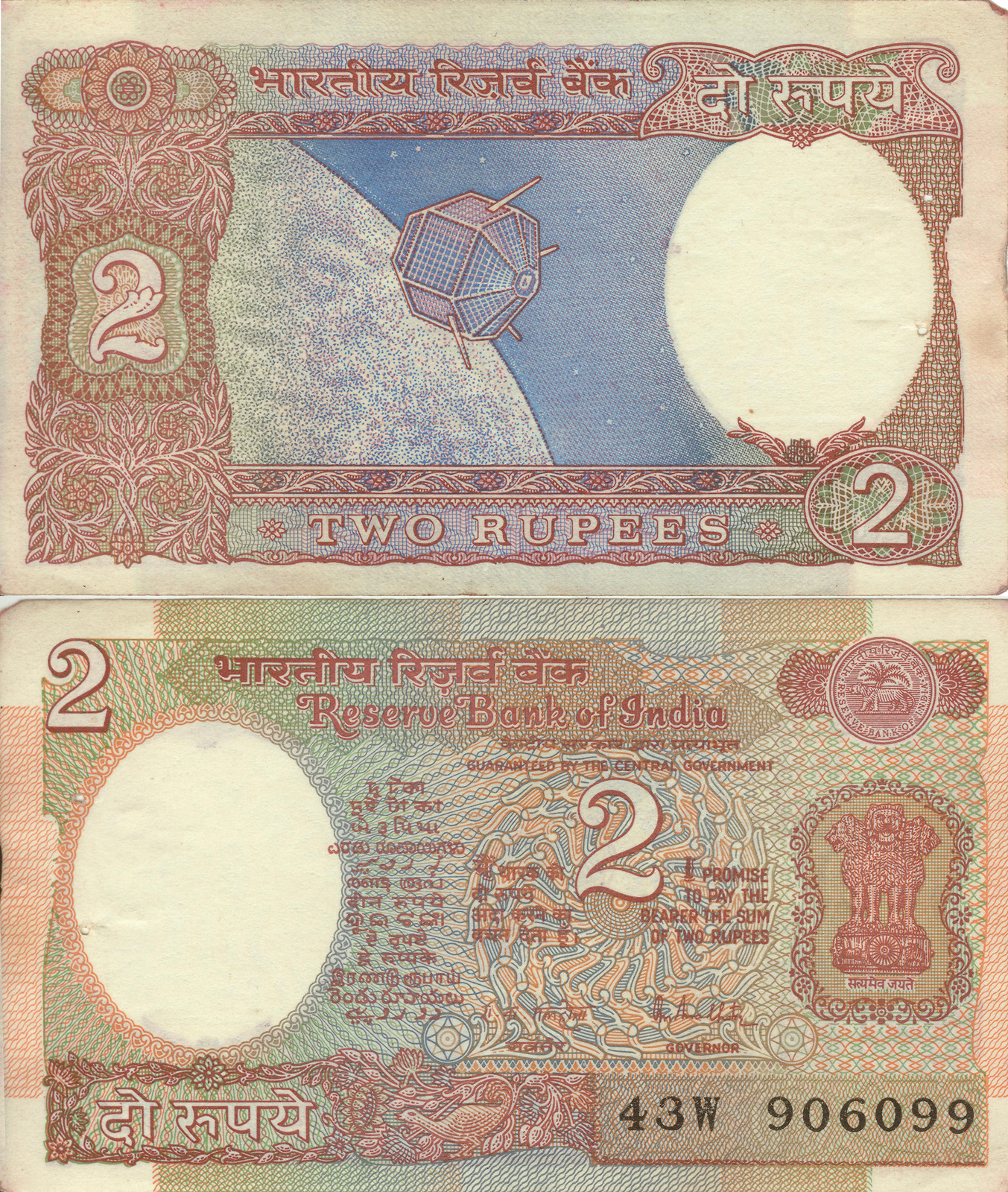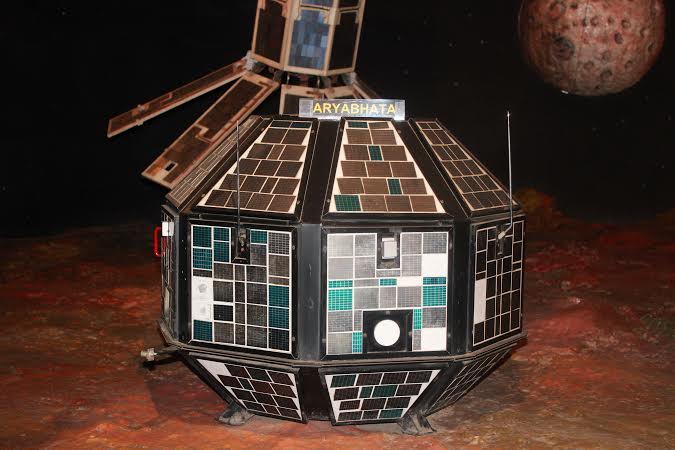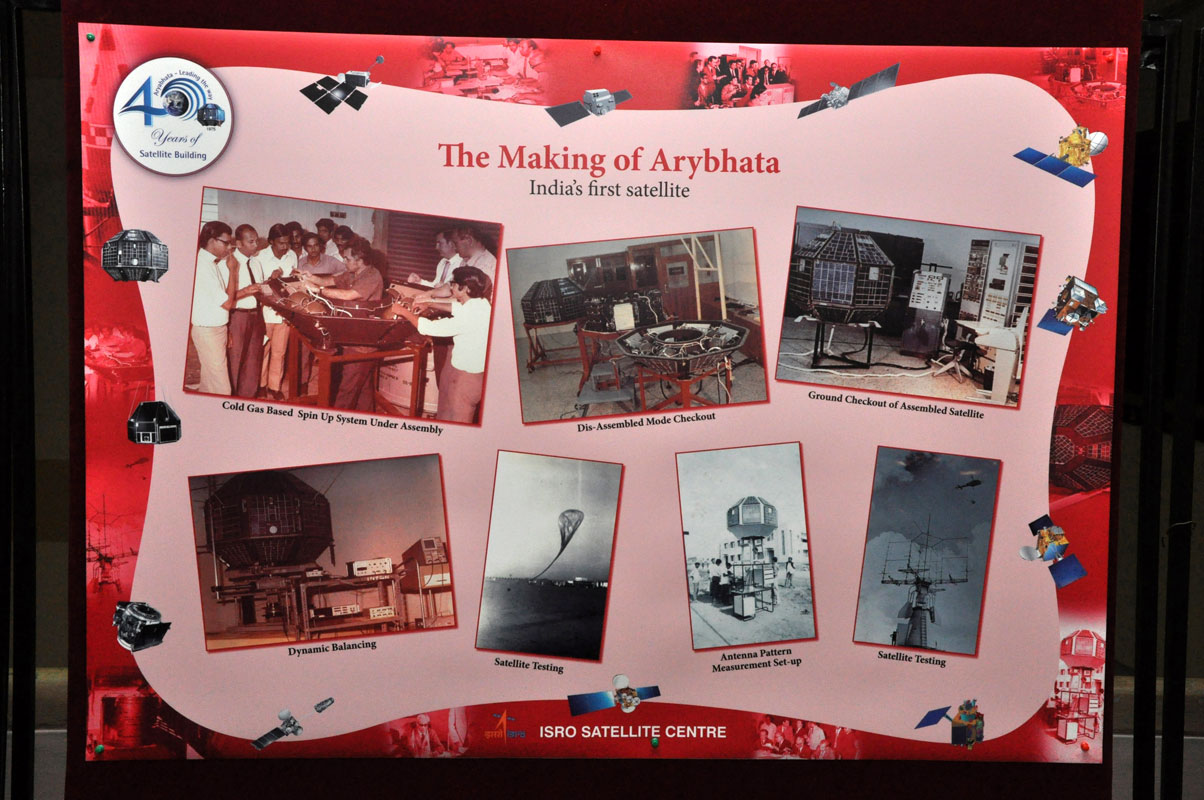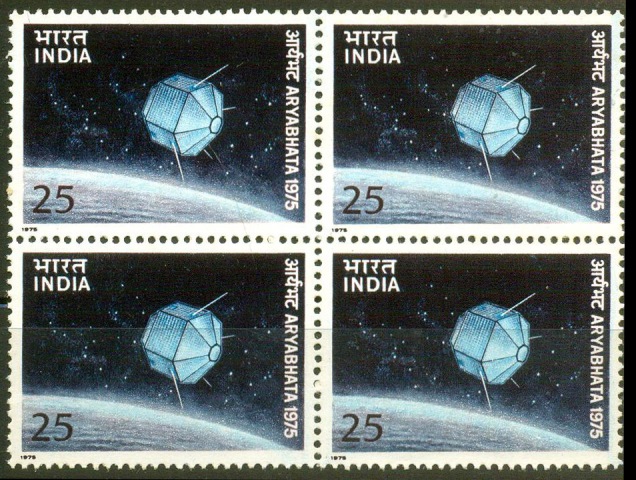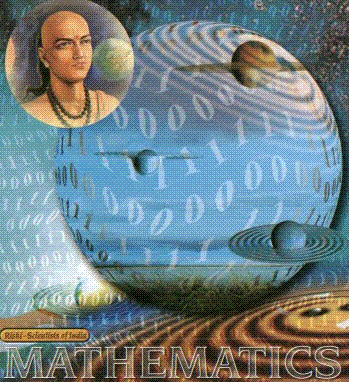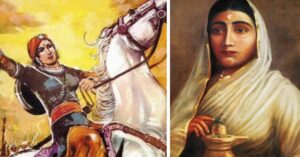10 Things You Probably Didn’t Know About India’s First Satellite And The Man It Was Named After
40 years ago, India launched its first satellite, Aryabhata. Here are some interesting facts about it and the famous astronomer and mathematician it was named after.
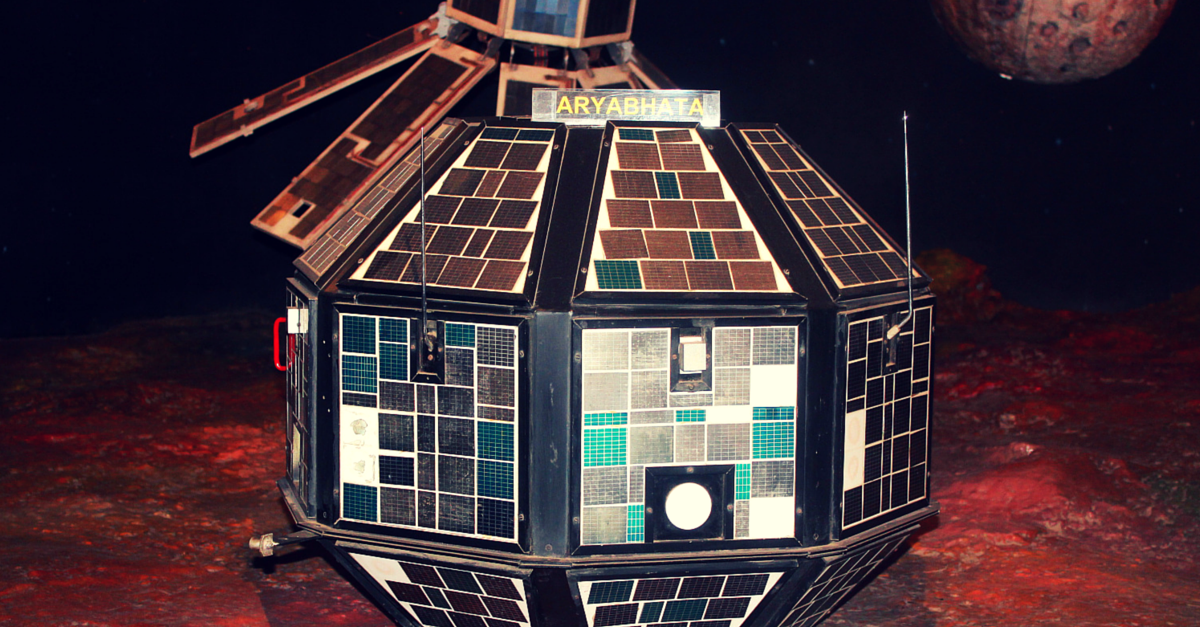
40 years ago, India launched its first satellite, Aryabhata. Here are some interesting facts about it and the famous astronomer and mathematician it was named after.
The year 2015 and the month April are significant for the Indian space programme. It was in April forty years ago (April 19, 1975) that India’s first satellite Aryabhata, was launched. Here are 10 very interesting things about it:
1. The native satellite was launched by Russia, from their Kapustin Yar rocket launch and development site using a Kosmos-3M launch vehicle taking the country on an exciting space odyssey.
Photo: www.isro.gov.in
We thus became the newest member of the Space Club.
2. Aryabhata was named after the 5th century Indian astronomer and mathematician.
3. The successful launch of Aryabhata was the result of a bilateral agreement between India and the Soviet Union, with the USSR agreeing to launch Indian Satellites.
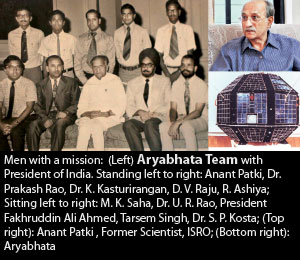
Photo: www.businessandeconomy.org
4. To mark this historic event, both India and Russia, released commemorative stamps and first day covers.
Photo: rammb.cira.colostate.edu
Photo: http://2.bp.blogspot.com/
5. Sometime in the 1990s, the Reserve Bank of India also celebrated this historic event by releasing a new Two Rupee Note, which had the image of the Aryabhata satellite on the reverse of the note.
Photo: http://www-personal.umich.edu/
6. The Aryabhata satellite project was initially pegged at Rs. 3 crore but cost a little more, as furniture and other things had to be bought.
Photo: www.isro.gov.in
“Many of the techniques we used in those days in building the satellites are still followed by ISRO now,” Rao said.
7. A toilet in Bangalore was converted into a data receiving centre for India’s first satellite Aryabhata.
Photo: freeimagescollection.com
8. The Aryabhata Mission had a 5-fold objective.
Photo: www.isro.gov.in
Since this was ISRO’s first foray into designing Satellites, the following were its objectives:
- Indigenous design and fabrication of a satellite and the evaluation of its performance in orbit.
- To have the capability, to perform a series of complex operations on the satellite in the orbit.
- To have the capability to set-up the necessary ground stations required to communicate with the satellite.
- To test the capability to fabricate, test and qualify the sophisticated spacecraft systems.
- To conduct, scientific experiments in X-ray astronomy, aeronomics and solar physics.
9. The Aryabhata was a 26-sided polyhedron 1.4 metres (4.6 ft) in diameter. All faces (except the top and bottom) were covered with solar cells. It weighed 360 Kgs.
Photo: www.stampexindia.com
On its launch, the Aryabhata’s 96.46-minute orbit had an apogee of 611 kilmetres (380 mi) and a perigee of 568 kilometres (353 mi), at an inclination of 50.6 degrees.
10. Indira Gandhi chose to name the satellite Aryabhata, and not Jawahar.
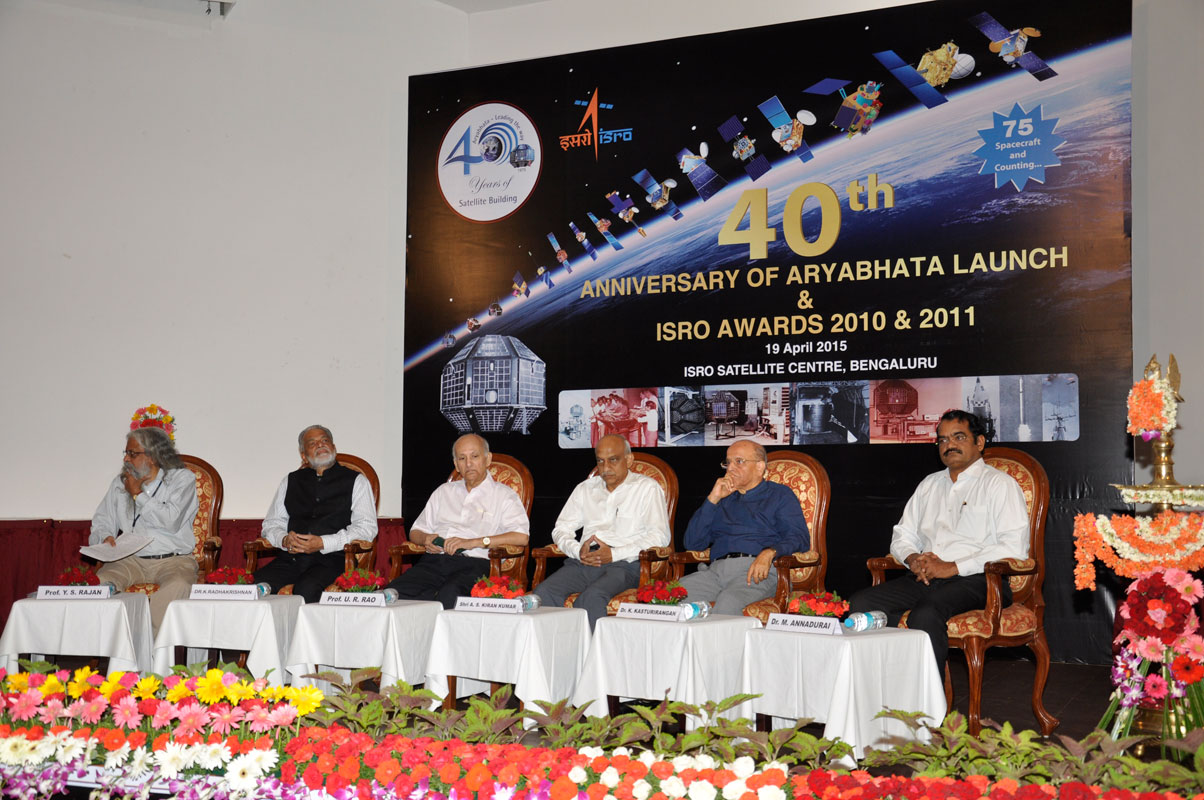
Photo: www.isro.gov.in
Here is an interesting anecdote as narrated by Dr. U R Rao, the then Chairman of the Indian Space Research Organization (ISRO). On naming India’s first satellite ‘Aryabhata’, after the country’s great astronomer, Rao said: “We had suggested three names. Aryabhata was on the top. It was followed by Maitri and Jawahar. Indira Gandhi the prime minister chose Aryabhata.”
Aryabhata:
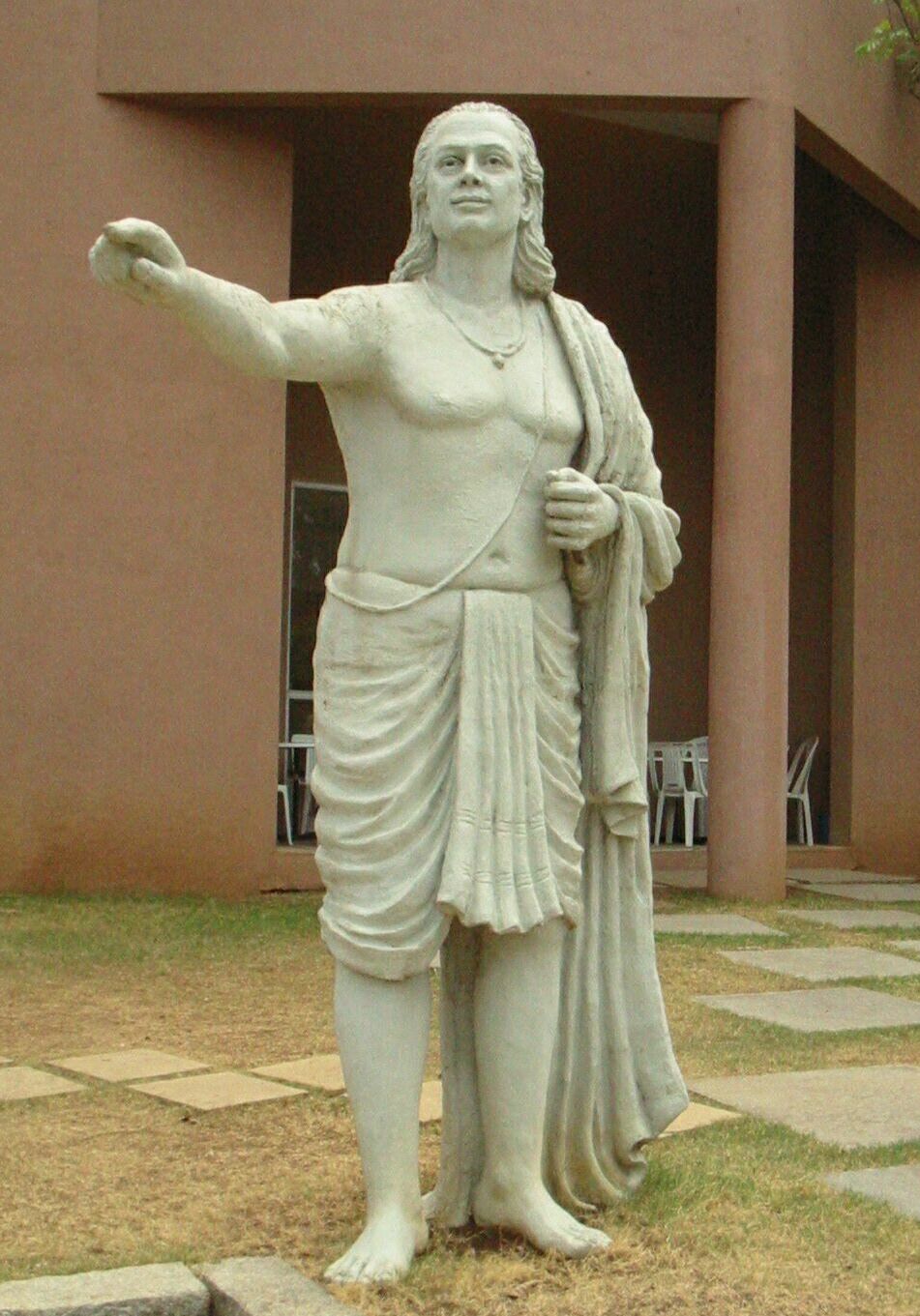
Source: wikimedia.org
Aryabhata (Sanskrit: आर्यभट) or Aryabhata I (476–550 CE) was the first of the major mathematician-astronomers from the classical age of Indian mathematics and Indian astronomy. His works include the Āryabhaṭīya (499 CE, when he was 23 years old) and the Arya-siddhanta.
1. The Discoverer of the exact value of π

Source: en.wikiquote.org (Credit: Holger Motzkau)
Aryabhata worked on the approximation for pi (), and may have come to the conclusion that is irrational. In the second part of the Aryabhatiyam (gaṇitapāda 10), he writes:
caturadhikam śatamaṣṭaguṇam dvāṣaṣṭistathā sahasrāṇām ayutadvayaviṣkambhasyāsanno vṛttapariṇāhaḥ.
“Add four to 100, multiply by eight, and then add 62,000. By this rule the circumference of a circle with a diameter of 20,000 can be approached.”
This implies that the ratio of the circumference to the diameter is ((4 + 100) × 8 + 62000)/20000 = 62832/20000 = 3.1416, which is accurate to five significant figures.
Therefor the credit of discovering this exact value of π may be ascribed to the celebrated mathematician, Aryabhata. His value of π is a very close approximation to the modern value and the most accurate among those of the ancients.
2. Aryabhata and Zero:
Photo: gandhadhagudi.wordpress.com
The concept of zero as a number and not merely a symbol or an empty space for separation is attributed to India, where, by the 9th century AD, practical calculations were carried out using zero, which was treated like any other number, even in case of division.
Aryabhata utilized the concept of zero in his mathematical work, but he did not ascribe a symbol for it.
3. Besides naming of India’s first satellite after the great astronomer and mathematician ‘Aryabhata’, there is lunar crater named after him, as is Bacillus aryabhata, a species of bacteria discovered in the stratosphere by ISRO scientists in 2009.
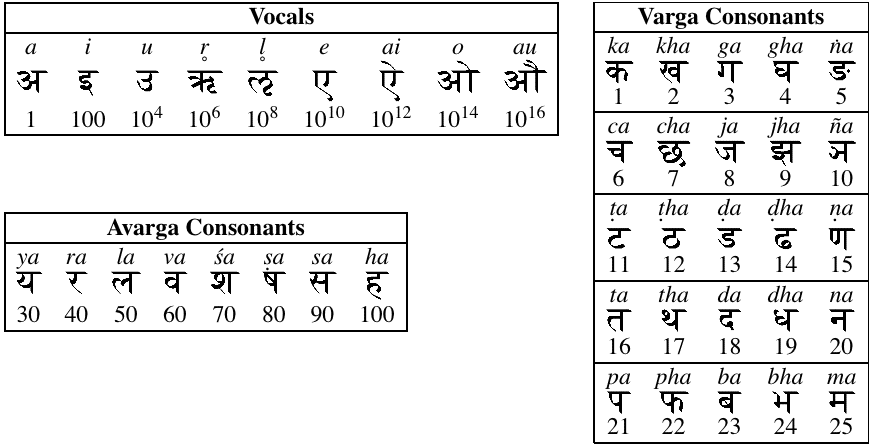
Source: wikimedia.org
Excerpts on the Aryabhata project by Dr. U R Rao, as reported in the Deccan Herald:
“During those days infrastructure was not available and we used what was available. In Bangalore we even converted a toilet into a data receiving centre for our first satellite Aryabhata,” U.R. Rao, former chairman of Indian Space Research Organisation (ISRO) told IANS on Monday over phone from Bangalore. “Starting from the scratch was the challenge before us while we began the Aryabhata project. Majority of the team members were new to this field. The time given was just two and half years so that it could be flown in a Russian rocket. Building a clean room, thermo vacuum room and other facilities were all new,” recalled Rao. According to him, the choice of building the satellite centre was between Bangalore and Hyderabad. “However Bangalore had some facilities like industrial sheds. We took six such sheds each measuring around 5,000 sq.ft.,” Rao said.
The Indian Space Research Organization (ISRO) has a come a long way since the launch of its first satellite, a tribute to its dedicated team of scientists and engineers.
Like this story? Or have something to share? Write to us: [email protected], or connect with us on Facebook and Twitter (@thebetterindia).
This story made me
-
97
-
121
-
89
-
167
Tell Us More
We bring stories straight from the heart of India, to inspire millions and create a wave of impact. Our positive movement is growing bigger everyday, and we would love for you to join it.
Please contribute whatever you can, every little penny helps our team in bringing you more stories that support dreams and spread hope.








